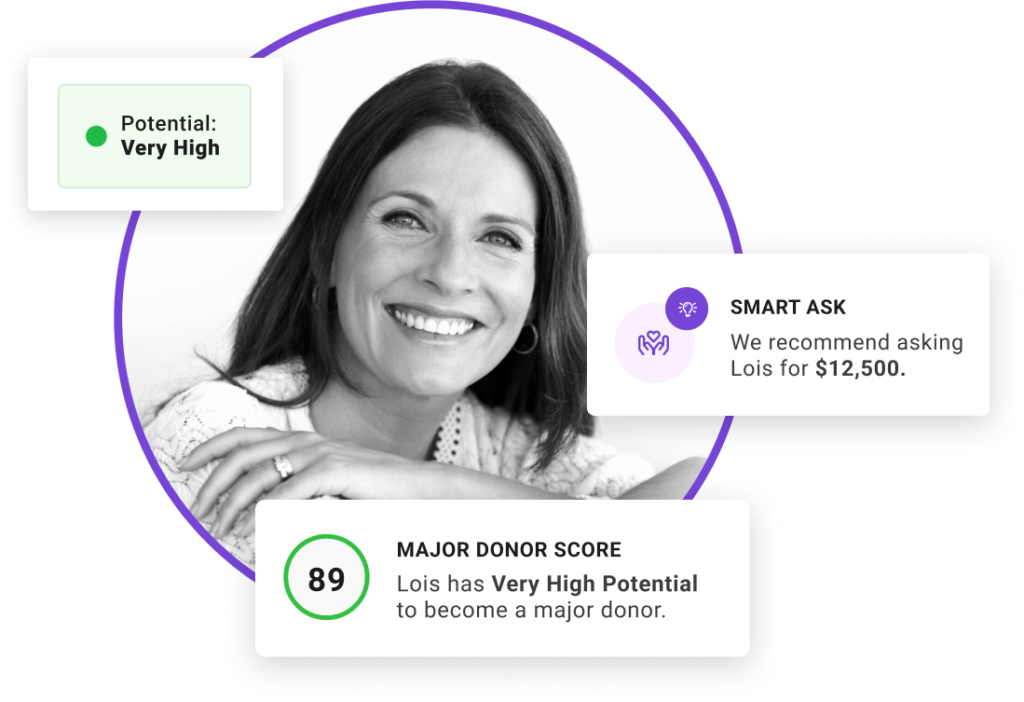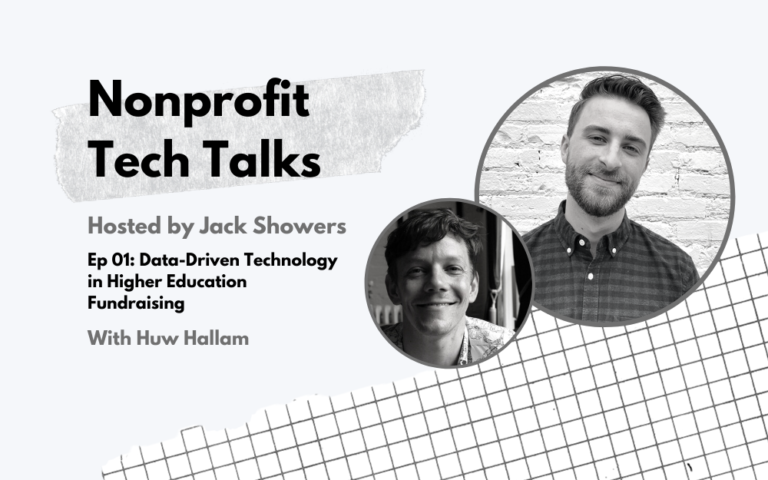Major gifts are key to a healthy nonprofit. Fundraising professionals often say that 88% of your funding will come from your major donors. However, major donors can be extremely difficult to identify and build relationships with.
While there is no threshold for what defines a “major donor,” they can be defined as an individual who makes a donation that positively and significantly impacts your organization’s ability to achieve its mission. For some nonprofits, major donations may be $1,000, while for others, they can be $1,000,000.
All donors are important to your nonprofit’s success, but it’s especially important to have actionable fundraising insights about your major donors. By better understanding your major donors, you can more effectively provide a highly valuable and reliable source of revenue for your organization.
This article will cover what a Major Donor Score is, how it works, and how you can utilize this feature with Fundraising KIT. Here’s a full table of contents:
What Is a Major Donor Score?
A major donor score is an affinity score used to rate current and prospective donors based on their ability to give a major gift. Major donor scoring is a type of donor segmentation that allows you to identify your most promising major gift prospects and tailor an appeal to meet them where they’re at in their donor journey.
Specifically, Fundraising KIT’s Major Donor prediction ranks the contacts in your database by how likely they are to provide a major gift.

Talk to a fundraising expert today to learn more about how Fundraising KIT can quickly and easily help your nonprofit raise more for your cause.
What Are the Benefits of Major Donor Scoring?
Major donors typically make up 12% of an organization’s donor base, and this subset of donors is likely getting even richer. In fact, over the last decade, the stock market grew by 300%, meaning that the wealthiest nonprofit supporters have likely become even more capable of providing major gifts.
However, this also means that major gift donors will become increasingly responsible for a larger proportion of nonprofit funding. This reality means that nonprofits will likely have to compete for the few donors that have the potential to contribute a major gift. More than ever before, identifying major donors is critical to organizational success.
With Fundraising KIT’s Major Donor Scoring feature, you can take the guesswork out of prospect research and personalize your major gift solicitations.
How to Secure Major Gifts With Major Donor Scoring
Fundraising KIT’s software sources and anonymizes millions of industry data points from a collection of global nonprofit organizations to make smart predictions based on your donors’ giving histories and demographic data.
Fundraising KIT’s algorithm analyzes giving history to identify giving patterns popular among major donors. For example, these data points are taken into account:
- Payment type
- Time of year a donation was made
- Total donation amount
- Trend of amounts donated
- Donation frequency
- Changes in donation frequency
Fundraising KIT can also pull demographic data. This type of data refers to the characteristics of a target audience, customer base, or population. Here are some examples:
- Median household income
- Median individual income
- Median real estate value
- Median monthly rent
- Median age
- Unemployment rates
Demographic data is important for fundraisers as it gives organizations a clearer picture of donor-giving capacity. For example, if a township has a median household income of $30,000, your likelihood of securing a major donor from this area would be low.
Additionally, if your CRM provides enough information to pull from, Fundraising KIT can also analyze engagement and interaction metrics. These metrics can tell you the type of communication your donors prefer, how frequently they prefer to be contacted, and if there have been any changes in communication frequency.
KIT’s scoring system is based on a 1-100 scale, with 1 being the lowest score and 100 being the highest. Here’s a full breakdown of the scoring system:
- Unlikely to become a major donor (0-10): These individuals haven’t shown any likelihood to be a major donor.
- Somewhat likely (10-30): KIT’s model found a slight likelihood that this individual will become a major donor.
- Likely (30-50): These donors have wealth, promising donation histories, or are actively engaged in ways similar to major donors already in the database. There’s a likelihood that these contacts could become major donors.
- Very likely (50-100): These donors have wealth, promising past donation histories, or are actively engaged in ways very similar to your other major donors. Thus, KIT considers these contacts very likely to become major donors.

Fundraising KIT also uses machine learning to strengthen its predictions over time. Machine learning is a type of Artificial Intelligence (AI) that uses algorithms and data to imitate the human ability to learn through trial and error. Fundraising KIT assesses a range of targeted data points to make its scoring system as accurate as possible.
How Can I Get Fundraising KIT’s Major Donor Score?
Fundraising KIT’s Major Donor Score feature is currently available to Salesforce, NeonOne, Keela, and Raiser’s Edge users by integrating Fundraising KIT with their nonprofit CRM.
Talk to a fundraising expert today to learn more about how Fundraising KIT can help your organization cultivate strong major donor relationships and raise more money.
Your database is key to enhancing your fundraising strategies and major donor relationships. What’s more, Fundraising KIT’s Major Donor Score takes the guesswork out of major donor identification and cultivation, guiding you to streamline your solicitation processes and generate the best result for your organization.

Taylor Palmer
Marketing Coordinator at Fundraising KIT
Taylor has always believed that knowledge is power, and the pen (or, in this case, keyboard) is the sword. Philanthropy and human rights are at the core of her ethos. When she is not engaged in friendly debate, you can find Taylor training in the boxing ring, snowboarding on the mountains, or running on Vancouver’s seawall.








One Comment